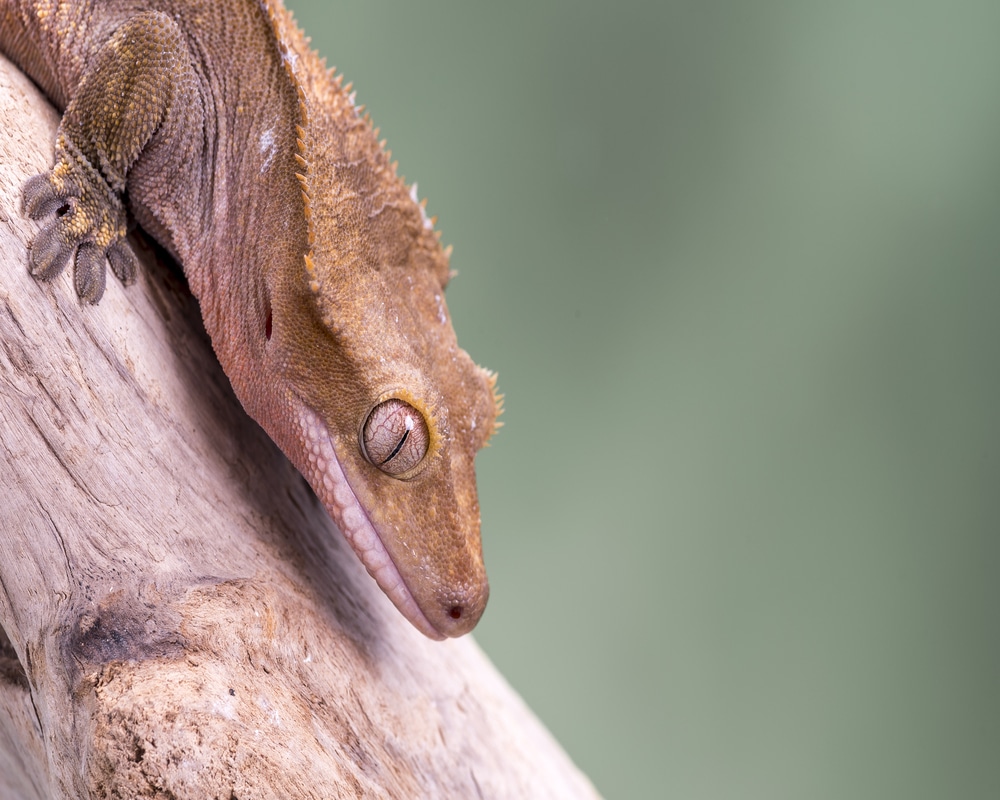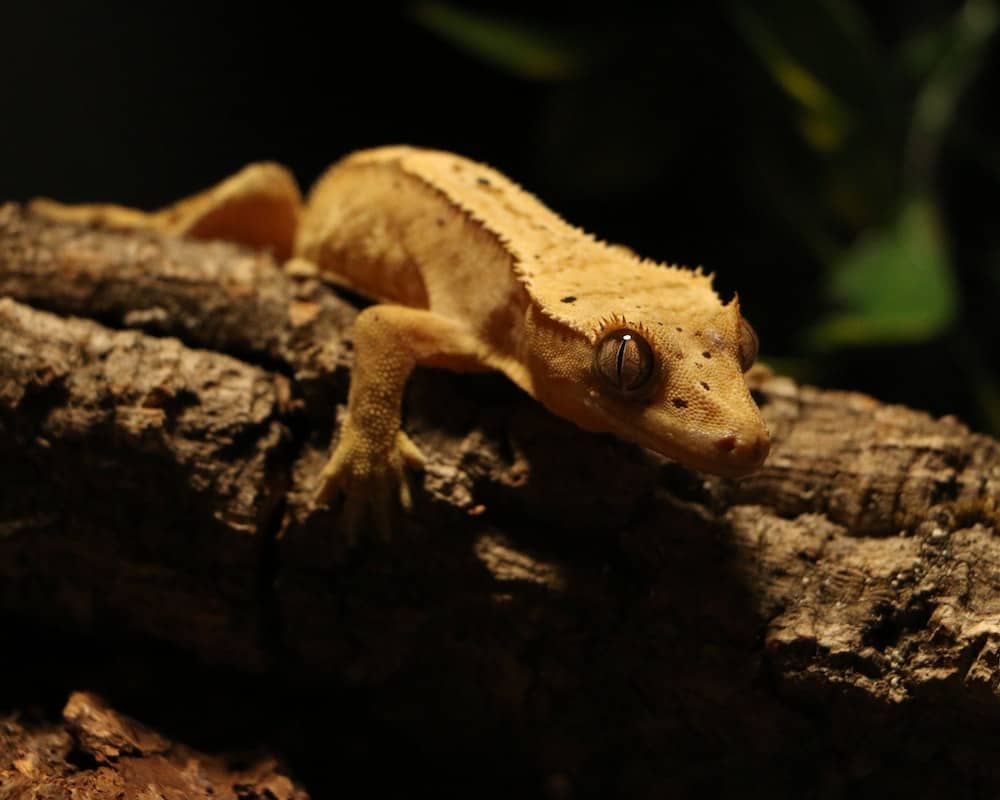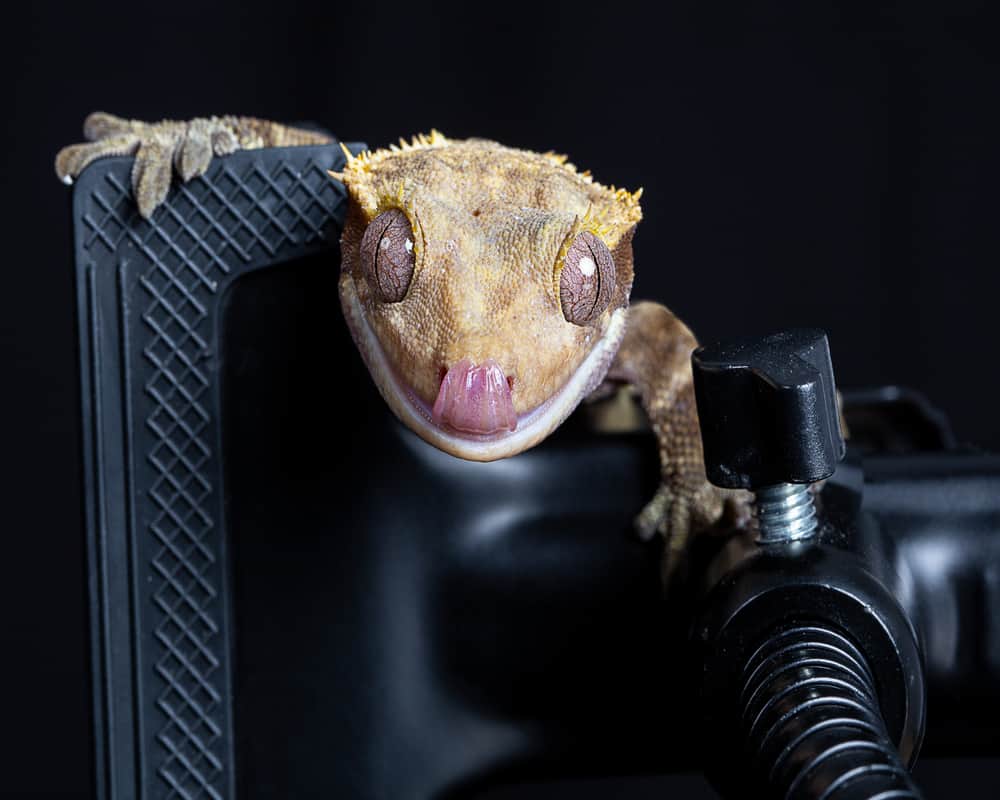Crested Geckos shed their skin as a part of their life cycle. The amount that they shed is dependent on factors such as their age, diet, and growth. These arboreal lizards shed or undergo ecdysis, a natural process in which they exchange their old skin for new.
Frequency Of Shedding In Crested Geckos
Due to their distinctive appearance, calm nature, and brilliant colors, crested geckos, also known by their scientific name Correlophus ciliatus, are intriguing and well-liked reptile pets.
Understanding the different features of pet care is crucial for pet owners, and a crested gecko’s life cycle includes shedding.
Like other reptiles, crested geckos regularly lose their skin throughout the course of their lifetimes. Age, rate of growth, and environmental conditions of the gecko are a few variables that affect how frequently they shed. Due to their quick growth and development, juvenile crested geckos tend to shed more frequently than adult geckos.
Most young geckos and hatchlings may shed every two to four weeks. Crested geckos may shed every 4 to 8 weeks as adults. Given below is a table to summarize the shedding frequency of these reptiles at different times of their life.
| Age | Shedding Frequency |
| Young ones and hatchlings | Every 2 to 4 weeks |
| Juvenile Crested Geckos | Every 2 to 4 weeks |
| Adolescent Crested Gecko | Every 3 to 6 weeks |
| Adult Crested Gecko | Every 4 to 8 weeks |
As shown above, crested geckos shedding frequency reduces as they grow older. When they are young, it is almost every two weeks or four weeks, and then it goes up to 8 weeks. As they become older, this frequency normally reduces.
Signs Of Impending Shed
These reptiles display distinct symptoms before beginning the shedding process, and as a responsible pet owner, it is great to have an idea of these signs.
To properly care for and encourage a crested gecko during this natural process, it is essential to recognize the warning indications of approaching shed in the animal.
Decreased Color
Prior to shedding, you can notice that the skin on your pet has a dull or faded appearance. It’s possible that the distinctively vivid colors will fade just before your gecko undergoes shedding.
Fun Fact: Crested geckos can change color to some extent, although the change is not as dramatic as in some other reptiles. Their coloration can be influenced by various factors, including mood, temperature, and environmental conditions.
Cloudy Eyes
The development of a milky or cloudy appearance in your pet’s eyes is one of the most obvious indicators of impending shed. The eyes appear less clear as a result of a fluid that accumulates between the old and new skin layers.
Reduced Appetite
These reptiles may have a decreased appetite when they get ready to shed. The gecko’s decrease in appetite is a normal reaction as it saves energy for the impending ecdysis.
Increased Fidgeting
Before shedding, some geckos become more active and restless. You might catch them moving repeatedly or more regularly, observing their enclosure. This sudden increased restlessness is a common sign, and you do not need to get worried.
Once they shed their skin, this constant fidgeting and restlessness will come down automatically.
Lifted Edges In Skin
Another sign of shedding is that the edges of your pet are going to undergo shedding. Edges of the skin that are beginning to lift are signs that a new layer of skin is forming underneath the old one. This is most noticeable around their face, limbs, and tail.
Tendency To Hide
If your pet is starting to find more hiding spots and staying there, then this is another sign of an impending shedding too.
These reptiles may seek hiding places more frequently when they get ready to shed. Creating a damp hide for them inside their cage can be helpful at this time because it gives them a place to hide and facilitates the shedding process.
Reduced Interaction
When they are going to shed, certain crested geckos may become less chatty or avoid handling. Respecting their request for less handling during this delicate time is vital.
Drinking More Water
It is also noticed that your gecko may start drinking a lot more water than usual. If you notice this, then make sure that you constantly fill up the water in the water dish. Fresh water must be available constantly during this period.
The Process Of Shedding: All You Need To Know
When these reptiles are prepared to shed, the following steps usually take place:
Pre-Shed
During this phase, the gecko’s body secretes a fluid to help separate the old and new skin layers.
Shedding Proper
The gecko will rub against various objects inside its container, such as branches and leaves, to help shed its old skin. Their terrarium’s damp climate helps to soften their skin, making it simpler for them to shed.
Post-Shed
The crested gecko will ingest the shed skin after it has successfully shed, a behavior that is both natural and advantageous because it supplies vital nutrients to them.
Their should seem smooth and colorful after shedding. The new skin will reflect light more effectively, enhancing the vibrancy of the gecko’s colors.
How Can You Help During The Shedding Process
Helping your pet shed its skin can be a helpful approach to ensure their comfort and well-being. Although these reptiles can typically shed on their own, the correct conditions and assistance can facilitate the process. Here are some methods you can use to assist your pet as it sheds:
Maintain Proper Humidity
To aid in shedding, these reptiles need a moderately high humidity level, typically between 50% and 70%. By sprinkling the cage with water each day, you can make sure the humidity level stays within this range.
To accurately track humidity levels, use a hygrometer.
Create a Moist Hide
Place a moist hide inside the enclosure using paper towels or a small container filled with damp moss.
As a result, a microenvironment with higher humidity will be created, enabling the gecko to withdraw to an appropriate location to facilitate the shedding process.
Keep an eye on the Gecko’s Behaviour
While it is shedding, keep an eye on them. It’s advised to avoid handling geckos during this period because some of them could become more sensitive or stressed.
Consult a reptile veterinarian if your pet is stressing out or having trouble shedding.
Check Your Gecko Thoroughly
Examine the body of your gecko for any retained shed once the shedding process is finished. Small fragments of skin that don’t always shed entirely can harm your health if you ignore them.
A damp cotton swab might help gently remove any retained shed if you discover any.
Provide Proper Nutrition
Your pet’s health, even throughout the shedding process, depends on a balanced diet.
Make sure you’re giving your pet a diversified diet that includes commercially available food and live insects like crickets or roaches.
Provide Fresh Water
To ensure that your gecko keeps hydrated throughout the shedding process, keep a shallow dish of fresh water on hand at all times. This is important because the gecko loses a lot of body moisture and liquids during the shedding process.
As a pet owner, you can constantly provide fresh water even after the shedding process, as it is important for your pet to regain body hydration.
Make Sure The Enclosure Is Properly Set Up
Check that the enclosure is the right size and has enough climbing and hiding places. Having a comfortable enclosure will help your crested gecko in the process of shedding. Creating a relaxing and exciting environment during shedding helps to lower stress.
Avoid Any Disturbances
Try to keep the gecko’s enclosure as quiet as possible while it is shedding. Rearranging or adding new items should be avoided since they can increase tension. Also, remember that your pet does not require any aid from your end during the process of shedding.
It is a natural process, and these reptiles know how to carry it out without any intervention from our end.
You may give your pet the greatest care possible during the shedding process by sticking to these instructions. Keep in mind that every gecko is different and that some may need more help than others.
Conclusion
Maintaining the health and well-being of your pet requires an understanding of the shedding process. Depending on their age and the environment they are in, they shed at various rates as a normal and necessary element of their growth and development.
You can make sure that your gecko has a smooth and successful shedding process by recognizing the signals of approaching the shed and providing a proper habitat.
You can have a long-lasting and fruitful connection with your alluring pet if you give it the right care and attention.




